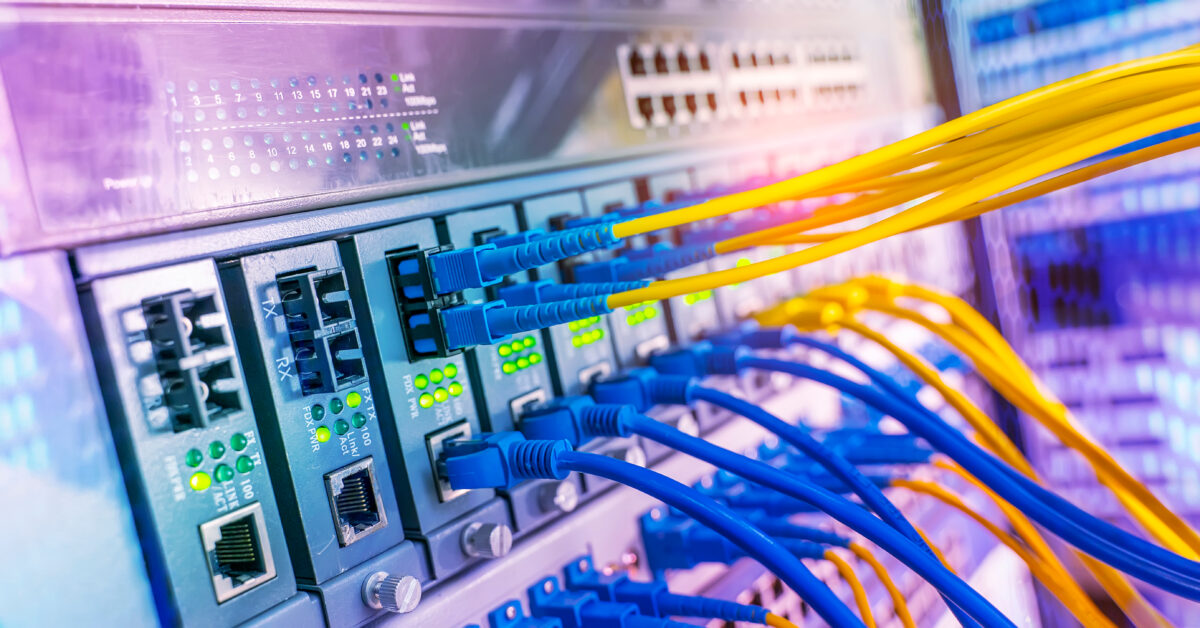Exploring the Cutting Edge: Current PON Technologies and the Path to 25G and 50G PON

Introduction
In today’s hyper-connected world, the demand for faster and more reliable internet services continues to grow exponentially. Passive Optical Networks (PON) have emerged as a critical technology to meet this demand. PON technologies have evolved significantly in recent years, offering improved speeds, scalability, and efficiency. In this blog post, we will delve into the current state of PON technologies, exploring the advancements that are shaping the future of high-speed internet access. We will also explore the key differences and similarities between 25G PON and 50G PON.
Understanding PON
Passive Optical Networks, or PON, refer to a class of fiber-optic network technologies that use point-to-multipoint architecture to provide high-speed data, voice, and video services. The “passive” element means that no active electronic components are used in the distribution network, which makes PON systems energy-efficient and cost-effective.
Current PON technologies include:
- Gigabit PON (GPON): A staple in the PON landscape for years, GPON offers symmetrical speeds of up to 2.5 Gbps downstream and 1.25 Gbps upstream. GPON is widely used in residential and small-to-medium business settings to deliver high-speed service.
- XG-PON (10G PON): As bandwidth demands increase, 10G PON has gained popularity. It provides speeds of up to 10 Gbps downstream and 2.5 Gbps upstream. This technology is suited for demanding applications, such as 4K/8K video streaming and high-capacity enterprise networks.
- XGS-PON (10G PON Symmetrical): XGS-PON is an evolution of GPON that offers increased bandwidth. It can deliver speeds of up to 10 Gbps downstream and 10 Gbps upstream, making it ideal for symmetric services. Businesses and service providers often opt for XGS-PON to support bandwidth-intensive applications.
- NG-PON2 (Next-Generation PON 2): NG-PON2 is at the cutting edge of PON technology, with capabilities for multiple wavelengths and time division multiplexing. It can deliver speeds of up to 40 Gbps and beyond, making it suitable for ultra-high-definition video, IoT, and future-proofing network infrastructure.
In addition, two significant advancements in PON technology, 25G PON and 50G PON, have emerged as frontrunners in delivering faster and more reliable broadband services. Both demonstrate a significant leap from the previous generation, 10G PON.
Unraveling the Differences and Similarities of 25G PON and 50G PON
| 25G PON | 50G PON | |
| 25 gigabits per second (Gbps) downstream and 10 Gbps upstream. | Symmetrical speeds of up to 50 Gbps downstream and upstream suitable for applications requiring ultra-fast internet, like 8K video streaming and VR gaming. |
| Serves most residential and business applications, including HD streaming and online gaming. | Equipped to handle the growing demand for data-intensive applications and services. |
| A single wavelength for downstream and multiple wavelengths for upstream transmission. | Multiple wavelengths for both upstream and downstream, allowing for parallel transmission and increased bandwidth. |
| Longer reach; suitable for deployments in larger geographical areas. | Optimized for shorter-reach applications, such as dense urban areas, where high capacity is in high demand. |
| More cost-effective due to its longer reach and mature technology. | Higher deployment cost, making it ideal for scenarios where ultra-high-speed connections are essential. |
| Backward-compatible with existing PON technologies, making it easier for providers to upgrade their networks incrementally. | 50G PON may require more significant network upgrades due to its higher capacity and wavelength requirements. |
Both 25G PON and 50G PON represent significant advancements in PON technology, offering different capabilities to meet diverse needs. While 25G PON provides a cost-effective solution with a longer reach, 50G PON steps up the game with symmetrical ultra-high-speed connections. The choice between the two largely depends on the specific requirements of network providers and the communities they serve.
Advancements and Benefits
The current state of PON technologies is marked by several noteworthy advancements and benefits, including:
- Higher Speeds: PON technologies now offer gigabit and multi-gigabit speeds, ensuring that users can enjoy seamless connectivity even with bandwidth-intensive tasks.
- Low Latency: Reduced latency is critical for applications like online gaming and real-time video conferencing, and PON technologies are optimizing latency for a better user experience.
- Improved Scalability: PON systems are highly scalable, allowing service providers to meet growing customer demands by simply adding more subscribers to the network.
- Enhanced Security: Fiber-optic networks are inherently secure, and PON technologies continue to refine encryption and security features to protect user data.
- Energy Efficiency: The passive nature of PON reduces energy consumption and carbon footprint, aligning with the push for sustainability.
Conclusion
PON technologies have come a long way, offering a wide range of options to meet diverse connectivity needs. From GPON to XGS-PON, these technologies are driving the future of high-speed internet access, enabling faster, more reliable and energy-efficient network solutions. As the demand for bandwidth continues to surge, PON technologies will play a pivotal role in keeping the world connected at the speed of light.As the demand for faster and more reliable internet continues to rise, it’s clear that both 25G PON and 50G PON have their roles to play in bridging the broadband divide and enabling the next generation of digital experiences. The future of PON technology is exciting, as it paves the way for smarter, more connected communities around the world.
Visit our learning center to learn more about PON.
Read the Other Blogs in Our PON Activation Series
Testing the PON | The Future of PON Technology | Boosting Success in PON Activation | Precision Testing Tools
Attending ANGA COM 2024? Hear Niki share a success story on deployment and measurement of multi-gig PONs with Yannick Sillis of Nokia as part of the FTTH panel on Tuesday, May 14, at 1 pm. Or come visit our booth no. B70 in Hall 8 to meet Niki and see our testing solutions for PON activation.


 Speed
Speed Capacity
Capacity Wavelengths
Wavelengths Reach
Reach Deployment Cost
Deployment Cost Compatibility
Compatibility


